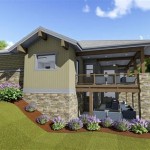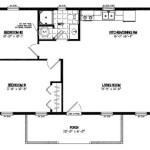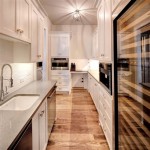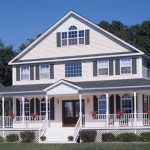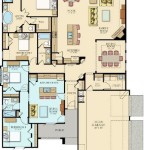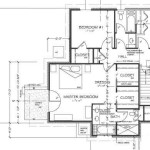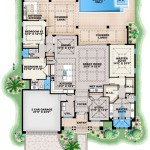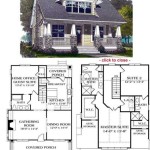Twin Two Bedroom Flat Plan With Dimensions: A Comprehensive Guide
The concept of "twin" two-bedroom flats, referring to two identical or near-identical flats designed side-by-side or stacked, is a popular approach in residential development. This efficient design strategy maximizes space utilization, simplifies construction, and streamlines the building process. A clear understanding of the flat plan, including detailed dimensions, is crucial for architects, developers, contractors, and potential homeowners. This article aims to provide a comprehensive exploration of twin two-bedroom flat plans with dimensions, covering essential considerations and design principles.
A detailed flat plan serves as the blueprint for construction, encompassing all aspects of the layout, including room sizes, wall thicknesses, door and window placements, and built-in fixtures. Accurate dimensions are paramount to ensure that the physical build conforms to the design, preventing costly errors and delays. Moreover, precise dimensions are vital for interior design, furniture selection, and space planning. Without a clear understanding of the spatial parameters, it becomes challenging to create a functional and aesthetically pleasing living environment.
Key Point 1: Understanding the Importance of Accurate Dimensions
Accurate dimensions in a flat plan are not merely numbers on paper; they are the foundation upon which the entire structure is built. The implications of dimensional inaccuracies can be far-reaching and detrimental. For instance, a slight error in the width of a bedroom could render it unsuitable for a standard-sized bed or wardrobe. Similarly, an incorrect dimension for a kitchen counter could lead to installation difficulties and wasted materials. Furthermore, dimensional discrepancies can impact building code compliance, potentially resulting in legal issues and costly rectifications.
The process of obtaining accurate dimensions typically involves precise surveying techniques and meticulous measurement during the planning phase. Architects and designers utilize specialized software and tools to create detailed floor plans with clearly marked dimensions. These dimensions often include overall flat dimensions, individual room sizes, wall thicknesses, door and window openings, and ceiling heights. It is also crucial to specify the units of measurement consistently, whether in metric (meters and centimeters) or imperial (feet and inches) units. Inconsistency in units can lead to significant interpretation errors.
Beyond the basic structural dimensions, the flat plan should also indicate the locations of essential services, such as electrical outlets, plumbing fixtures, and HVAC (Heating, Ventilation, and Air Conditioning) systems. These details are crucial for coordinating the work of different trades and ensuring that the flat functions efficiently and safely. The dimensions of these service points should be accurate to ensure proper installation and future maintenance.
Building Information Modeling (BIM) is increasingly used to create and manage flat plans. BIM allows for a 3D representation of the building, which can help to identify potential clashes between different building systems and improve the accuracy of dimensions. BIM software also allows architects and engineers to collaborate more effectively, reducing the risk of errors and improving the overall quality of the design.
Key Point 2: Essential Elements of a Twin Two-Bedroom Flat Plan
A well-designed twin two-bedroom flat plan typically incorporates several essential elements to maximize functionality, comfort, and aesthetics. These elements include the living area, kitchen, bedrooms, bathrooms, and storage spaces. Efficiently integrating these elements within the given spatial limitations requires careful planning and consideration of the intended occupants' needs.
The living area serves as the primary gathering space for residents and should be designed to accommodate both relaxation and entertainment. Sufficient space should be allocated for seating arrangements, media equipment, and potentially a dining area, depending on the overall layout. Dimensions for the living area should allow for comfortable movement and prevent overcrowding. Natural light is also a crucial consideration, and the placement of windows should be optimized to maximize daylight penetration.
The kitchen is another critical element of the flat plan. The dimensions of the kitchen should be sufficient to accommodate essential appliances, such as a refrigerator, oven, stovetop, and dishwasher. Adequate counter space is also necessary for food preparation. The layout of the kitchen should be designed to promote efficient workflow, typically following a triangular configuration between the sink, refrigerator, and stovetop. The kitchen may be designed as an open-plan concept, integrated with the living area, or as a separate, enclosed space.
The bedrooms are intended for rest and privacy. The dimensions of the bedrooms should be sufficient to accommodate a bed, wardrobe, and other essential furniture. Adequate storage space is also crucial, and built-in closets or wardrobes are often incorporated into the design. Natural light and ventilation are important considerations for creating a comfortable and healthy sleeping environment.
Bathrooms should be designed to be functional and hygienic. The dimensions of the bathrooms should be sufficient to accommodate a toilet, sink, and shower or bathtub. Adequate ventilation is essential to prevent moisture buildup and mold growth. The placement of plumbing fixtures should be carefully considered to minimize noise and ensure efficient drainage. The number of bathrooms in a two-bedroom flat can vary depending on the overall layout and target market.
Storage space is often a limiting factor in flat design. The flat plan should incorporate sufficient storage space for residents to store their belongings. This can include closets, cabinets, and other storage solutions. Optimizing storage space can significantly enhance the functionality and livability of the flat. Moreover, the effective design considers ease of access to the utilities and the maintenance points.
Key Point 3: Design Considerations for "Twin" Concepts and Shared Spaces
When designing twin two-bedroom flats, specific considerations arise from the shared nature of the structure and the potential for shared spaces. The architectural design needs to address issues of privacy, sound insulation, and shared access points. Furthermore, the design should consider the overall aesthetic harmony between the two units, creating a cohesive and appealing building facade.
Privacy is a paramount concern in twin flat designs. Because the flats share common walls, it is essential to provide adequate sound insulation to minimize noise transmission between the units. This can be achieved through the use of soundproofing materials, such as dense insulation and resilient channels, in the construction of the shared walls and floors. The placement of windows and doors should also be carefully considered to minimize the potential for visual intrusion between the units.
Shared access points, such as stairwells or hallways, require careful planning to ensure efficient circulation and accessibility for both units. The dimensions of these shared spaces should be sufficient to accommodate the expected traffic flow. In cases where the flats are stacked, the design should comply with accessibility regulations, such as the Americans with Disabilities Act (ADA), to ensure that the units are accessible to people with disabilities. Elevators can be required to provide an accessible path if the flats are in multi-story buildings.
The exterior design of twin flats should strive for aesthetic harmony and create a visually appealing structure. The use of similar materials, colors, and architectural details can help to create a sense of continuity and unity. However, it is also possible to introduce subtle variations in the design to differentiate the two units while maintaining overall coherence. The facade should consider the overall aesthetic appeal of the neighborhood and blend in with the surrounding architectural style.
Furthermore, the design should consider the potential for shared outdoor spaces, such as balconies or gardens. These shared spaces can provide opportunities for social interaction and community building. The design of these spaces should create private zones and consider the needs of all occupants. Moreover, the design should also take into account the impact of the twin structure on the surrounding environment. Building orientation, energy efficiency, and sustainable building materials should be considered to minimize the environmental footprint of the building. The design should aim to maximize natural light and minimize energy consumption.
Twin flats often benefit from efficient utility layouts. Plumbing and electrical systems can be mirrored or shared to minimize installation costs. Careful planning of utility routes and access points can reduce maintenance complexity and future upgrade costs. This requires close collaboration between the architect, engineer, and contractor to ensure smooth coordination and effective cost control.
In conclusion, the successful design and construction of twin two-bedroom flats relies on accurate dimensional planning, a clear understanding of spatial relationships, and the careful consideration of shared elements. By diligently addressing these key factors, developers can create functional, aesthetically pleasing living spaces that meet the needs of residents while maximizing the efficiency and cost-effectiveness of the building process.

Twin Investment Duplex 2 Bed 1 Bath 56 X34 1740 Sf Custom House Plans And Blueprints

Twin Oak I Two Level 2 Bed Adu 25x38 Custom House Floor Plan Only

Bungalow Floor Plan With 2 Bedrooms

Low Cost House Plans 765 Sq Ft 2 Bedroom 1 Bath Duplex Quickplans Net

House Plan B1062 The Twin Cover Barna Log

49 X 55 Twin House Floor Plan
Twin House 28 A Cross Section B Ground Floor Plan Scientific Diagram

The Twin Tulip Adu 2 Bed 1 Bath 30 X25 750sf Custom House Plans And Blueprints

Ground Floor Plan Of Twin Bungalow Dwg Autocad Drawing

Gorgeous Two Bedroom Tiny House Designs To Inspire The Life
Related Posts

